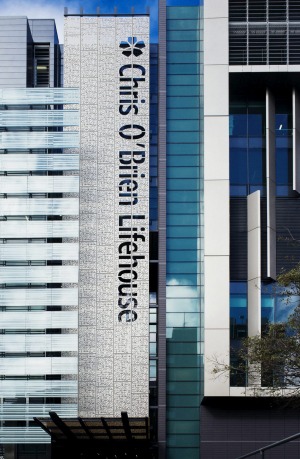
Cancer patients in NSW are overwhelmingly positive about their clinicians and care, but the most celebrated and best-funded cancer hospital in Australia is an outlier for poor performance on measures such as symptom severity and patients’ participation in their care.
The Chris O’Brien Lifehouse, which was built in 2013 to become the pre-eminent centre of excellence in cancer care, scored significantly lower than other outpatient clinics on several aspects of care that were assessed by the NSW Bureau of Health Information and Cancer Institute NSW.
The agencies surveyed 3700 patients three months after they visited a cancer clinic in 2015 and 99 per cent said the care they received was either good or very good.
But the Lifehouse fell below the state average on all measures when patients scored the severity of their symptoms and was highlighted for performing significantly worse than other clinics when patients in the active treatment stage assessed their wellbeing, anxiety, depression and pain.
It was so anomalous to its neighbouring hospitals that an appendix to the report assessed separately the performance of the Sydney Local Health District with and without the Lifehouse, which was the only private hospital included in the survey.
This showed that the Lifehouse outperformed its peers in terms of the timeliness of appointments, comfort of the waiting room, privacy, cleanliness and parking.
But it dragged down the whole district when its figures were included for out-of-pocket expenses, symptom severity, maintaining a positive attitude and patients understanding and participating in their care.
Cancer Institute of NSW chief executive David Currow said cancer patients had a better experience of outpatient care than any other clinic or discipline, but that there was room for improvement when it came to their involvement in decisions about their treatment.
Only three-quarters of cancer patients in NSW reported that they were definitely involved in decisions about their care, as much as they wanted to be.
It was likely that several factors influenced the differences between clinics, Professor Currow said.
“As this is the first time we’ve done this analysis we’re all in the process of learning from it,” he said.
“I expect Chris O’Brien Lifehouse will be wanting to work with Cancer NSW and the Sydney Local Health District to understand what other things can be done to have patient outcomes much closer to the rest of the state.
“It’s been relatively recently set up and setting up any new organisation, particularly in health, is a very big ask.”
A spokeswoman for the Lifehouse said it was the only dedicated cancer hospital and saw a high number of complex and advanced cancer patients and many patients travelled from out of the district.
“In the 18 months since this survey was undertaken, we have implemented many measures to try to address the physical and psychosocial needs of our patients,” she said.
“These include a pain clinic, allied health services that assist patients with counselling, physiotherapy and tailored exercise programs.
“We also have a number of special services to particularly meet the emotional needs of patients and their families a long way from home, including a choir, musical performances, an award-winning art program, and a host of complementary therapies from acupuncture to massage.”
The NSW government has held out the Lifehouse as a model for public-private partnerships.
It contracts the Lifehouse to treat a fixed proportion of public patients each year, and the centre supplements its income with private patients.
